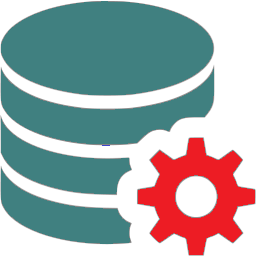5 Steps for successful Cloud Data Migration

Migration of business data on cloud have been historically slow. For various reasons, the supplier ecosystem has become complicated with more and more participating vendors for analyst evaluations of cloud databases, data warehouses, and many other things. Consequently moving from on-premises data environments to the cloud is an incredibly complex and technical challenge. As per Gartner research Infrastructure and operations leaders under pressure to migrate quickly to the public cloud are susceptible to several common cost mistakes. Gartner predicts that through 2024, 60% of infrastructure and operations (I&O) leaders will encounter public cloud cost overruns that negatively impact their on-premises budgets. Despite all these, cloud data is here to stay. However how do organizations leverage the business value with cloud data warehouses? In this article we have showcased 5 steps for successful Cloud Data Migration.
Business Drivers for Cloud Data Warehousing
Some of the top reasons for cloud adoption are agility, innovation, security, the need to adopt new capabilities, faster time to value & cost. With serverless databases, cloud data warehouses provide a great agility. Moreover tools are available to replicate, snapshot data, to scale and improve performance. In most cases, requirement to aggregate and simplify data are top priorities. Cloud Data Warehouse provides a great case for single point of aggregation where many different types of data exists in various source systems (inside/outside organization). Concluding cloud data warehouses can solve complex & larger business problems than that could be solved with on-premises data warehouses (software and hardware).
Recommended focus areas for Cloud Data Migration
Data driven leaders agree that” lift and shift” data from on-premise to cloud is not a great strategy. Lift and shift will bring the existing data issues along with the data itself to the cloud for further fixing it again and finally re-engineering it. This risks migrating bad data, stale data and data that’s never ever used. Consequently it will lead into confusion / conflict in data usage & increased (unnecessary) cost. Here are some recommended areas leaders can focus on:
Proper Planning
Instead of lift and shift, leaders should map out a strategy and plan what to migrate, how to migrate it, and when to migrate it. Careful planning, design, and execution are key ingredients of successful cloud migration. Many iterations (instances) of migrations can be avoided with right thoughtful planning. Proper scoping of migration strategy inline with the business goals & current/future data ecosystem (architecture, governance, management, engineering) will mitigate/avoid future risks & cost.
Modernize the Data
Data driven leaders realize the importance of cleaning existing systems before moving into new one. Why to bring over the same garbage data or broken Integrations to new environment? Starting with a simple & clean current state today will help in great visibility of future complicated state (of systems).
Discover the Data Relationships
Before migration, knowing your data, data dependencies and data relationships is important. It also helps in your data governance and data management in the process ahead. Greater business value can be achieved with proactive data discovery and relationship mapping. It helps in building metadata and data definitions around different data sets.
Five phases of cloud migration approach
1. Initiation (Startup)
The initiation phase consists of building the right plan, team, infrastructure, and processes for migration planning & execution.
2. Requirements, Analysis and Disposition
This phase focuses on gathering requirements and defining an execution plan. During this phase, organizations understand and document current state of assets like reports, queries, databases, sources, ETL, usage patterns, stakeholders, dependencies, priorities, etc.
3. Initial Migration
This phase focuses on:
1. Documenting data quality
2. Source to Target mapping
3. Initial migration of dependant assets.
4. Initial migration of all other assets (with least dependant assets in end)
5. Documenting (Cataloging) migration lineage
4. Revise and Test Dependent Assets
In this phase you test the results of the initial migration and correct for any issues. Here businesses should provide appropriate role based access, validate and correct migrated data assets.
5. Production Preparation and Implementation
In this final phase, following tasks take place:
• Testing & validation of the complete migration process (I.e. job sequencing)
• Validating dependent assets.
• Run dry run(s) with validation of results.
• The final production run.
Preparo Analytics empowers data driven leaders with data and analytics solutions to make businesses stable, better, & competitive. The company enables data driven leaders with cloud data migration strategy, planning & implementation
Curious to learn more about how we can help you? Get in touch today.
